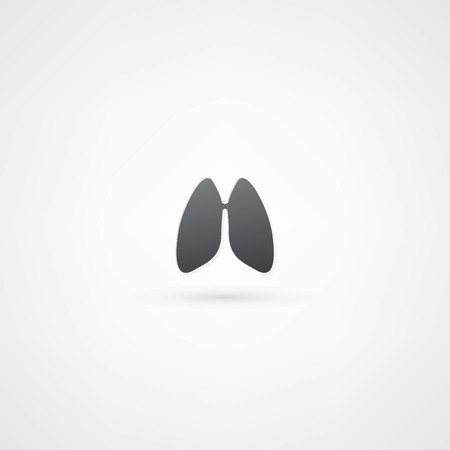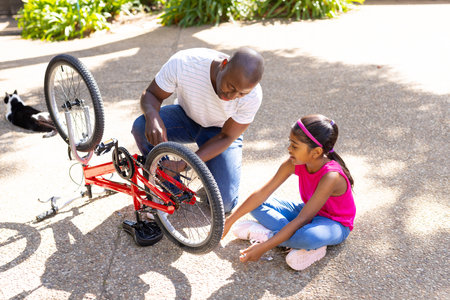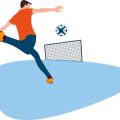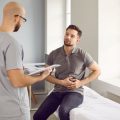Overview of Stroke Recovery in the US
Stroke is a leading cause of serious long-term disability in the United States, affecting hundreds of thousands of Americans each year. According to the Centers for Disease Control and Prevention (CDC), nearly 800,000 people in the US experience a stroke annually. This high prevalence highlights the importance of effective stroke recovery programs that support survivors and their families through every step of the rehabilitation journey.
What Is Stroke Recovery?
Stroke recovery refers to the process of regaining skills and abilities that may have been lost due to brain injury caused by a stroke. Recovery can include physical therapy, occupational therapy, speech-language therapy, emotional support, and more. The goal is to help survivors live as independently as possible and improve their quality of life.
The Significance of Comprehensive Programs
Comprehensive stroke recovery programs are essential because they address not just physical needs but also emotional, cognitive, and social challenges. These programs often bring together a team of professionals who create personalized treatment plans for each individual. Family members are also involved, as their support plays a crucial role in the survivor’s progress.
Key Components of Stroke Recovery Programs
| Component | Description |
|---|---|
| Physical Therapy | Helps survivors regain strength, balance, and mobility |
| Occupational Therapy | Focuses on daily living skills like dressing, bathing, and eating |
| Speech-Language Therapy | Assists with communication difficulties and swallowing issues |
| Cognitive Rehabilitation | Addresses memory, attention, and problem-solving skills |
| Emotional Support | Provides counseling and resources for mental health challenges such as depression or anxiety |
| Family Education & Support | Teaches families how to best assist their loved one throughout recovery |
Why Focus on Comprehensive Care?
A comprehensive approach ensures that every aspect of a survivor’s well-being is addressed. This type of care gives individuals the best chance at regaining independence and adapting to new challenges following a stroke. By supporting both survivors and their families, these programs help foster hope and resilience throughout the recovery process.
2. Key Components of Stroke Rehabilitation Programs
Stroke recovery in the United States is built around a team approach, focusing on each person’s unique needs. Here’s a closer look at the core elements that make up effective stroke rehabilitation programs.
Physical Therapy
Physical therapy helps survivors regain strength, balance, and movement. Therapists use exercises and activities tailored to improve mobility, prevent muscle stiffness, and encourage independence in daily life. Common methods include guided walking, balance training, and strength-building routines using equipment or body weight.
Occupational Therapy
Occupational therapy focuses on helping people return to everyday tasks such as dressing, eating, bathing, and managing household activities. Therapists may introduce adaptive tools or modify home environments to make daily living safer and easier for stroke survivors.
Speech-Language Therapy
Many people experience difficulty speaking, understanding language, or swallowing after a stroke. Speech-language pathologists work with individuals to rebuild communication skills and address swallowing challenges. Sessions are personalized and may involve exercises for voice control, word recall, or safe swallowing techniques.
Mental Health Support
Coping with a stroke can be emotionally challenging. Rehabilitation programs often include counseling or support groups to help manage anxiety, depression, and frustration. Mental health support encourages positive thinking and emotional healing throughout the recovery journey.
Social Integration
Rebuilding social connections is a key part of recovery. Programs may offer group activities, peer mentoring, and family education sessions to promote social engagement and community reintegration. These services help reduce feelings of isolation and build confidence in returning to daily life.
Key Elements at a Glance
| Component | Main Focus | Typical Activities |
|---|---|---|
| Physical Therapy | Movement & Strength | Walking practice, balance exercises, stretching |
| Occupational Therapy | Daily Living Skills | Dressing aids training, kitchen safety education |
| Speech-Language Therapy | Communication & Swallowing | Speaking drills, comprehension games, swallowing exercises |
| Mental Health Support | Emotional Well-being | Counseling sessions, support groups, stress management techniques |
| Social Integration | Community & Relationships | Group outings, family workshops, peer mentoring programs |
The combination of these components ensures that stroke survivors in the US receive comprehensive care aimed at improving both their physical abilities and overall quality of life.

3. Multidisciplinary Approaches and Team-Based Care
In the United States, stroke recovery programs rely on a multidisciplinary approach to help patients achieve the best possible outcomes. This means that care is provided by a team of professionals who each bring their own expertise to support the patient’s recovery journey. Collaboration among rehabilitation specialists, doctors, nurses, and caregivers is key to creating an effective, personalized treatment plan.
Who Makes Up the Stroke Recovery Team?
A typical stroke recovery team in the US includes several healthcare professionals who work together closely:
| Role | Main Responsibilities |
|---|---|
| Physiatrist (Rehabilitation Doctor) | Oversees medical aspects of rehabilitation and coordinates care plans. |
| Physical Therapist (PT) | Helps patients regain strength, balance, and mobility. |
| Occupational Therapist (OT) | Focuses on improving daily living skills like dressing, eating, and bathing. |
| Speech-Language Pathologist (SLP) | Works with communication, speech, and swallowing difficulties. |
| Nurse | Provides ongoing medical care and monitors vital signs. |
| Social Worker/Case Manager | Offers emotional support and helps coordinate discharge planning and community resources. |
| Caregiver/Family Member | Supports daily activities and provides encouragement at home. |
The Power of Teamwork in Stroke Recovery
This collaborative approach ensures that all aspects of a patient’s health—physical, emotional, and social—are addressed. Each team member communicates regularly about progress and challenges so that adjustments can be made quickly to the recovery plan. For example, if a physical therapist notices a new mobility challenge, they can alert the doctor or occupational therapist right away to modify therapy goals. This teamwork creates a safety net for patients as they transition from hospital to home or outpatient care.
Benefits of Multidisciplinary Care
- Personalized Treatment Plans: The team tailors therapy based on individual needs and recovery goals.
- Better Communication: Regular updates between team members prevent gaps in care.
- Smoother Transitions: Patients receive coordinated support when moving from one stage of recovery to another.
- Emotional Support: Social workers and caregivers provide encouragement during difficult times.
- Improved Outcomes: Research shows that teamwork helps patients regain independence faster and reduces hospital readmissions.
The Role of Family and Caregivers in the US
Caring for someone after a stroke often involves family members or close friends. In American culture, caregivers are considered part of the recovery team. They receive education from healthcare providers about how to assist with exercises, medication management, and day-to-day needs at home. Many stroke recovery programs offer caregiver training sessions and support groups to help families adjust to new routines.
Takeaway: Working Together for Better Recovery
The multidisciplinary, team-based approach is central to stroke recovery programs across the US. By bringing together different specialists—and including families in the process—patients benefit from comprehensive care that addresses every aspect of their well-being throughout their rehabilitation journey.
4. Community Resources and Support Systems
Stroke recovery is not just about medical treatments and therapy; it also relies heavily on the support and resources available in the community. In the United States, a wide range of local resources, support groups, adaptive services, and home health care options can make a significant difference for stroke survivors and their families.
Importance of Community Support
Community resources provide emotional encouragement, practical help, and opportunities for social interaction. These services help stroke survivors regain confidence, reduce feelings of isolation, and promote independence during the recovery process.
Types of Community Resources
| Resource Type | Description | Where to Find |
|---|---|---|
| Support Groups | Meetings for stroke survivors and caregivers to share experiences, tips, and encouragement. | Local hospitals, community centers, American Stroke Association website |
| Adaptive Services | Programs that teach new skills or adapt activities to individual needs, such as driving evaluation or cooking classes. | Rehabilitation centers, non-profit organizations, local agencies on aging |
| Home Health Care | Nursing care, physical therapy, occupational therapy, and speech therapy provided at home. | Home health agencies, referrals from healthcare providers |
| Transportation Assistance | Help with getting to appointments or running errands if mobility is limited. | Public transit services for seniors/disabled, volunteer driver programs |
| Meal Delivery Services | Nutritional meals delivered to the home for those who have difficulty cooking. | Meals on Wheels, local senior services |
How Support Groups Help Stroke Survivors
Support groups are especially helpful because they offer a safe space to discuss challenges and celebrate milestones. They often invite guest speakers such as therapists or nutritionists and may organize social events or educational workshops. Many groups now offer virtual meetings, making them accessible even if travel is difficult.
Finding the Right Support Group
You can ask your healthcare provider for recommendations or search online through organizations like the American Stroke Association or local hospital websites. It’s okay to visit different groups until you find one that feels comfortable.
Home Health Care Options in the US
If you or your loved one needs extra help at home after a stroke, there are many options available. Home health care teams can assist with medication management, wound care, exercises prescribed by therapists, and daily living activities like bathing or dressing. Medicare and many private insurances cover some home health services if medically necessary.
Tips for Making the Most of Community Resources:
- Stay connected: Regularly check in with support groups and community programs.
- Ask questions: Don’t hesitate to ask your doctor or therapist about local resources.
- Be open: Trying different services helps you discover what works best for your situation.
- Involve family: Family members can also benefit from caregiver support programs and training.
The right combination of community resources and support systems can greatly enhance recovery outcomes for stroke survivors in the United States. By taking advantage of these services, you can build a strong foundation for long-term wellness and independence.
5. Best Practices and Innovations in Stroke Recovery
Evidence-Based Practices in Stroke Rehabilitation
Across the United States, stroke recovery programs emphasize evidence-based practices to help survivors regain independence and improve their quality of life. These practices are grounded in scientific research and are widely adopted by healthcare professionals:
| Practice | Description | Common Settings |
|---|---|---|
| Task-Oriented Training | Focuses on practicing daily activities like dressing, eating, or walking to boost functional recovery. | Inpatient, Outpatient, Home Health |
| Constraint-Induced Movement Therapy (CIMT) | Encourages use of the weaker limb by restricting movement of the unaffected side. | Specialized Rehab Centers |
| Intensive Physical & Occupational Therapy | Delivers high-frequency, personalized therapy sessions for motor and cognitive skills. | Hospitals, Outpatient Clinics |
| Cognitive Rehabilitation | Targets memory, attention, and problem-solving through structured exercises. | Neurorehabilitation Programs |
| Speech-Language Therapy | Aids with communication and swallowing difficulties after a stroke. | Rehabilitation Centers, Telehealth |
Technological Advancements Shaping Stroke Recovery
The US healthcare system is embracing new technologies to enhance stroke rehabilitation. These innovations make therapy more engaging and accessible:
Robotic-Assisted Therapy
Robotic devices support repetitive movements for arms or legs, helping patients rebuild strength and coordination. Many rehab centers now offer robotic-assisted gait training and upper limb therapy.
Virtual Reality (VR) and Gamification
VR platforms create immersive environments where patients practice real-life tasks in a safe setting. Gamified exercises motivate users to participate actively in their recovery.
Telehealth and Remote Monitoring
Telemedicine connects patients with therapists from home, making care available in rural or underserved areas. Wearable sensors monitor progress and alert clinicians about potential issues early.
Current Trends Across the US Healthcare Landscape
Personalized Care Plans
Treatment is increasingly tailored to each individuals unique goals, challenges, and living situation. Multidisciplinary teams—often including doctors, therapists, nurses, and social workers—collaborate closely with patients and families.
Community-Based Programs & Support Groups
Many US cities offer community reintegration services that help stroke survivors return to work, school, or hobbies. Peer-led support groups provide emotional encouragement and practical advice.
Cultural Competency in Rehabilitation Services
Diverse populations require culturally sensitive care. Stroke programs are working to address language barriers, health literacy needs, and family dynamics common among various American communities.
Key Innovations at a Glance:
| Innovation | Main Benefit | Example Usage in the US |
|---|---|---|
| Robotics & Exoskeletons | Smoother motor relearning for severe cases | Baylor Scott & White Institute for Rehabilitation (Texas) |
| Mobile Apps for Home Exercise Programs (HEP) | Easier tracking of progress outside clinic visits | Mayo Clinics post-discharge app tools (Minnesota) |
| Bilingual Therapy Resources | Improved access for non-English speakers | Kaiser Permanente’s Spanish-language rehab materials (California) |
| Cognitive Training Software | User-friendly brain games for all ages | Cleveland Clinic Memory Health Program (Ohio) |
| Pilot Community Integration Initiatives | Smoother transition back into everyday life | Northeast Arc Life Skills program (Massachusetts) |
The field of stroke rehabilitation continues to evolve rapidly across the United States as experts adopt innovative approaches supported by research and technology. By combining proven best practices with cutting-edge solutions, stroke recovery programs strive to offer every survivor the greatest chance at regaining function and leading a fulfilling life.


